Introduction
- What is MMPI-II?
- Who administers, interprets, and reports it?
- Its use in offering treatment.
- Treatment strategies using MMPI-II.
This presentation seeks to explore MMPI-II. It explains who ministers the MMPI-II test, how to interpret, as well as report it the MMPI_II test. It also explains the use of MMPI-II in offering treatment. Finally, the presentation gives the treatment strategies while using MMPI-II.

What is MMPI-II?
- The MMPI-I was developed in the 1940s.
- The test measures adult psychopathy.
- MMPI-II is the most commonly used clinical instrument in adult psychopathy.
- It is used for persons above 18.
- MMPI-1 was developed in the 1940s. It was later upgraded to MMPI-II in the late 1960s.
- MMPI-2 is the most used form of psychometric test on the personality and psychopathy of adults that was developed at the University of Minnesota.
- MMPI-A is the test that is used for teenagers only.
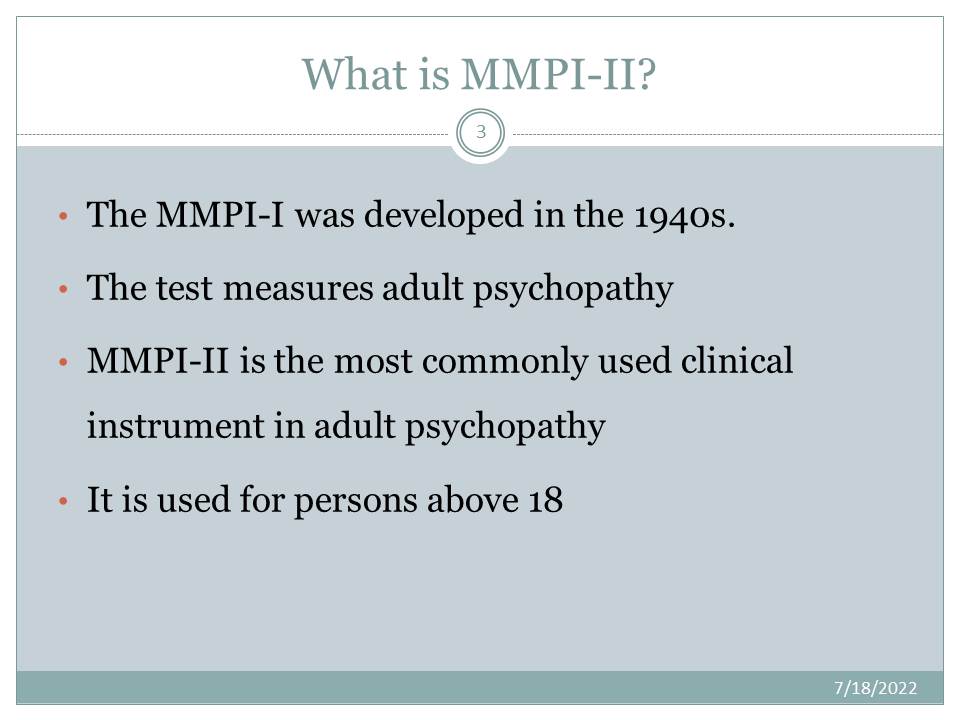
MMPI-II- Description
- It requires 1-2 hours to complete.
- There is a self-help questionnaire with 567 questions.
- It has 10 clinical scales.
- It is designed with 4 validity scales- L, F, Back F, and K-Scale.
- The amount of time taken to take the test depends on the reading level of the individual.
- The 567 questions are true/false questions.
- The 10 clinical scales are for the assessment of the 10 abnormal behavior on human (Hypochondriasis, Depression, Hysteria, Psychopathic Deviate, Masculinity/Feminity, Paranoia, Psychasthemia, Schizophrenia, Hypomania, and Social Introversion.
- The validity scales are: Lie(L)-Scale, F-Scale, Back F-Scale and K-Scale.
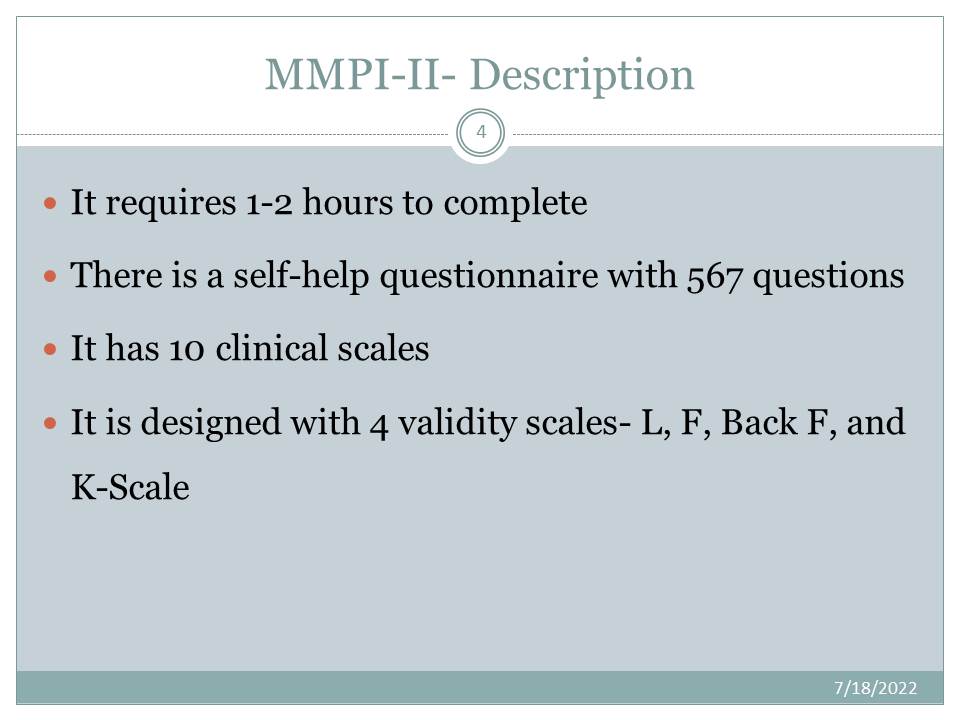
MMPI-II- Application
- The MMPI-II is applicable in medical, mental health, and employment.
- It is also used in non-clinical settings.
- The MMPI-II has a wide research base.
- It is commonly used by psychologists (The University of Minnesota, 2011).
- The MMPI-II is used in non-clinical settings in the assessment of persons in high-risk public positions, such as police officers, firefighters, and pilots, among others.
- The fact that MMPI-2 has a wider existing research base and its commonness among psychologists makes it one of the most used clinical tests worldwide.
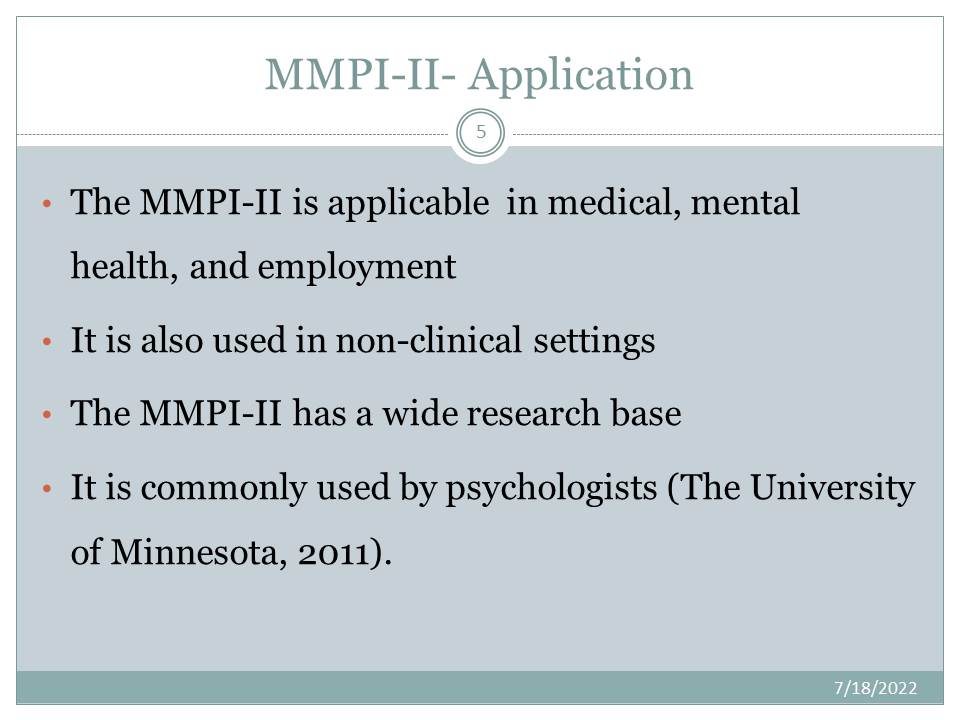
Legal and Ethical Requirements
- The test is administered and interpreted by a clinical psychologist/psychiatrist.
- It requires the ability to enter data in a computer.
- The psychologist should be able to assess reading level of the respondent.
- He should have the knowledge of algorithms used in the test (Bow, Flens, Gould, & Greenhut, 2005).
- The person to administer and interpret the MMPI-2 should be a suitable and experienced clinical psychologist or psychiatrist.
- The minimum reading level of the respondent should be 8th grade.
- The professional should have knowledge on the applicable algorithms and decision rules.
- Ability to make a scientific opinion.
- Ready to maintain confidentiality.
- Good knowledge of psychological assessment.
- Ability to identify a conducive test environment.
- In reporting, the professional conducting the test should put his opinion scientifically
- The professional should maintain confidentiality in the application of the automated report.
- Only competent psychologists should do the administration and interpretation of the results.
- The environment in which the test is done should be calm and free from interruptions.
- Able to identify cut off points.
- A score of 65 or higher if there is a trait: Ability to device self interpretive rules.
- No over-reliance on computer-generated reports.
- The cut-off points in MMPI-2 are 65 points or higher if there is a syndrome/trait.
- The professional should be able to validate the report generated by the computer.
- The interpreter should be in a position to incorporate his own rules when making decisions that are scientific.
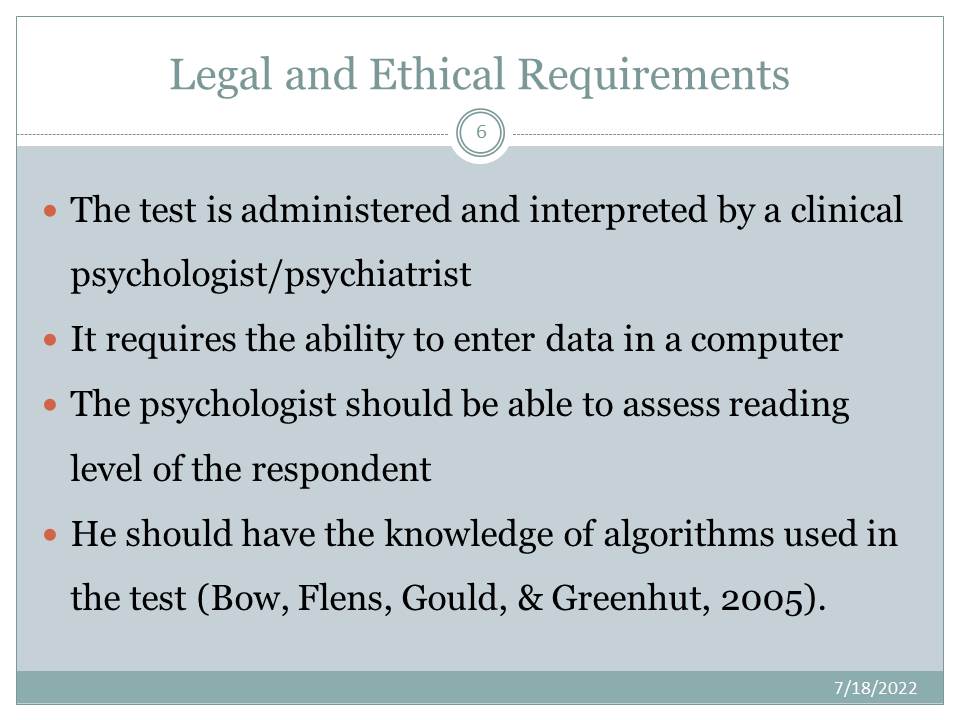
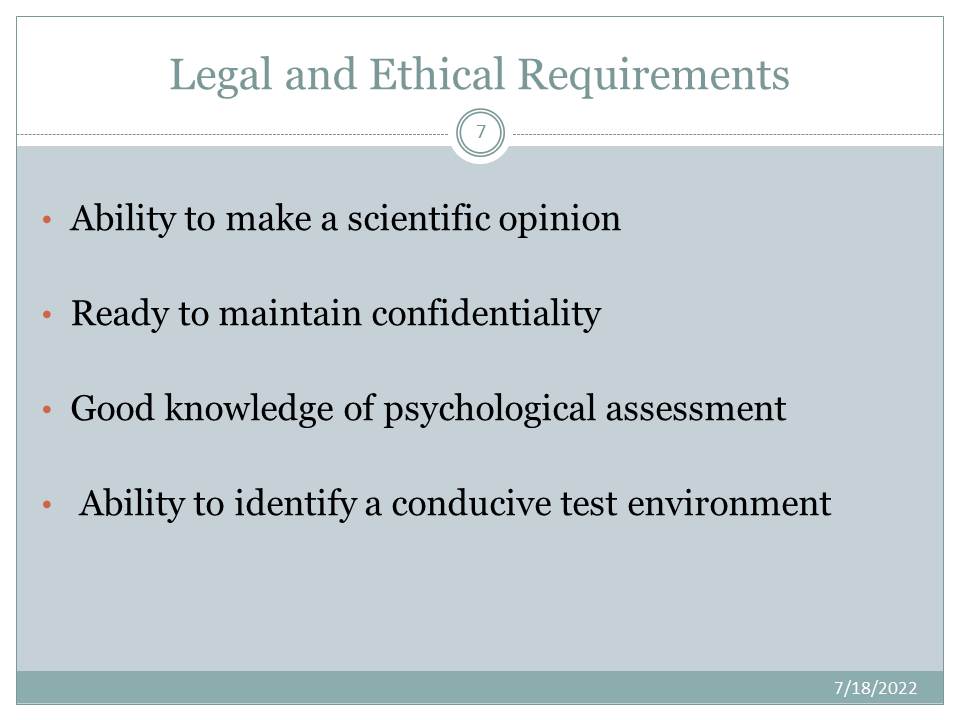
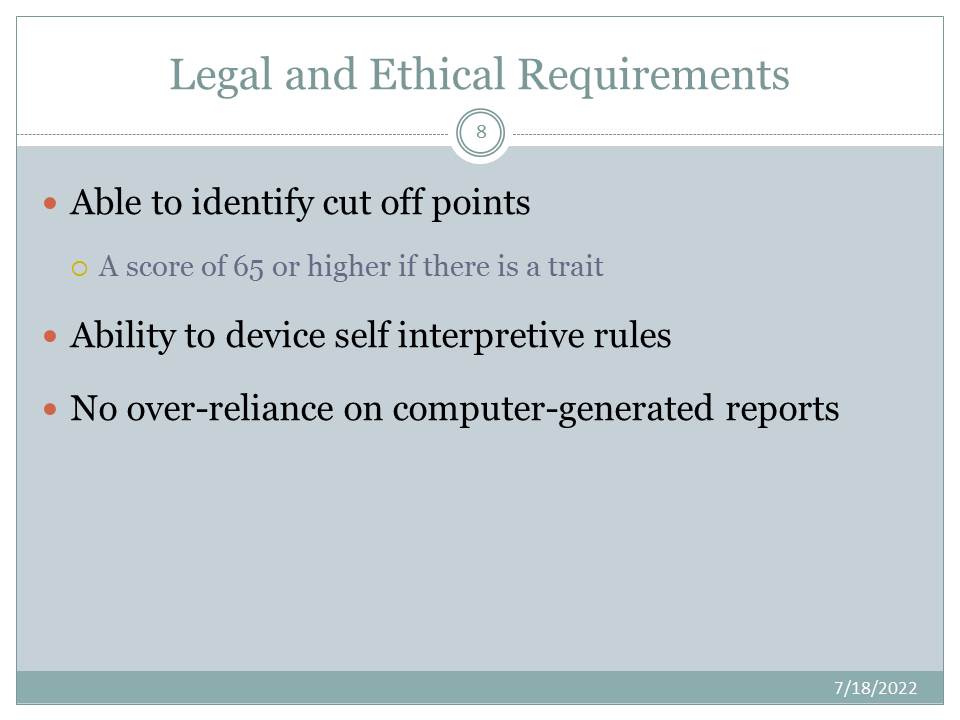
Use of MMPI-II in Treatment
- MMPI-II helps in determining the underlying problem.
- It also identifies the level of the problem.
- The test determines the level of treatment needed.
- The results provide guidance in the level of counseling required (Kaplan & Saccuzzo, 2013).
- The 10 scale clinical questions assist the clinician in identifying the underlying problem in the patient.
- Interpretation of the MMPI-II score sheet gives the magnitude of the problem.
- The MMPI-II gives directions on the level of treatment and counseling that the patient requires.
- It determines the honesty of the patient: The Lie Scale is used.
- The test determines the experiences of the patient (F and K Scales).
- It also assists in identifying defensive patients (Framingham, 2013).
- The Lie-Scale is used to determine whether the patient is honest or not. The treatment given is, thus, based on the honesty of the patient.
- The F and K Scales assist in identifying the past experiences of the patient, as well as defensive patients in order to implement the correct treatment.
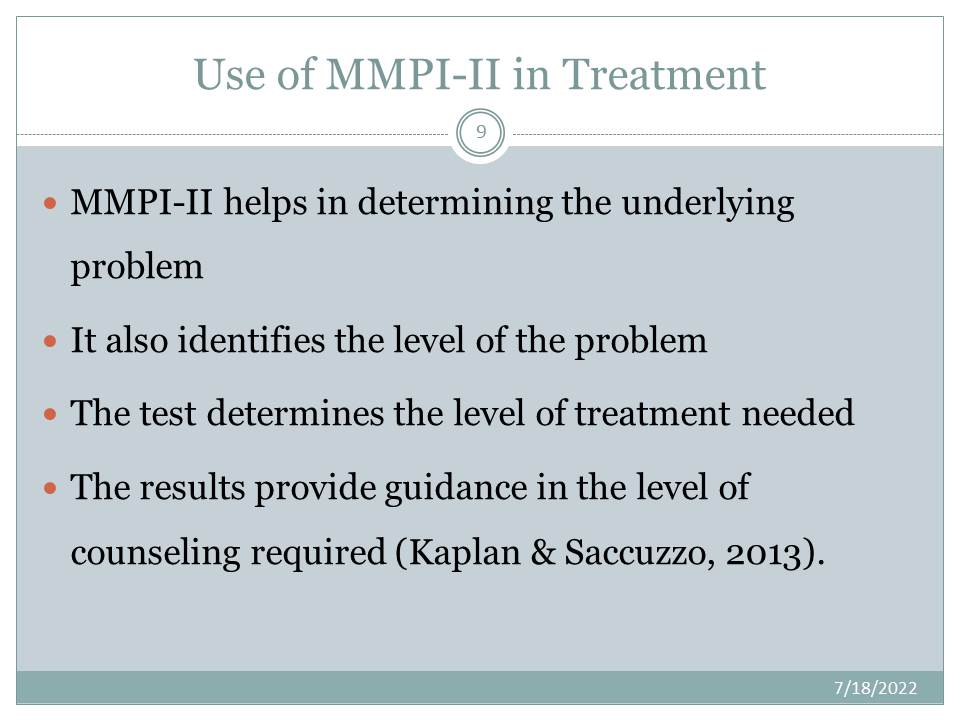
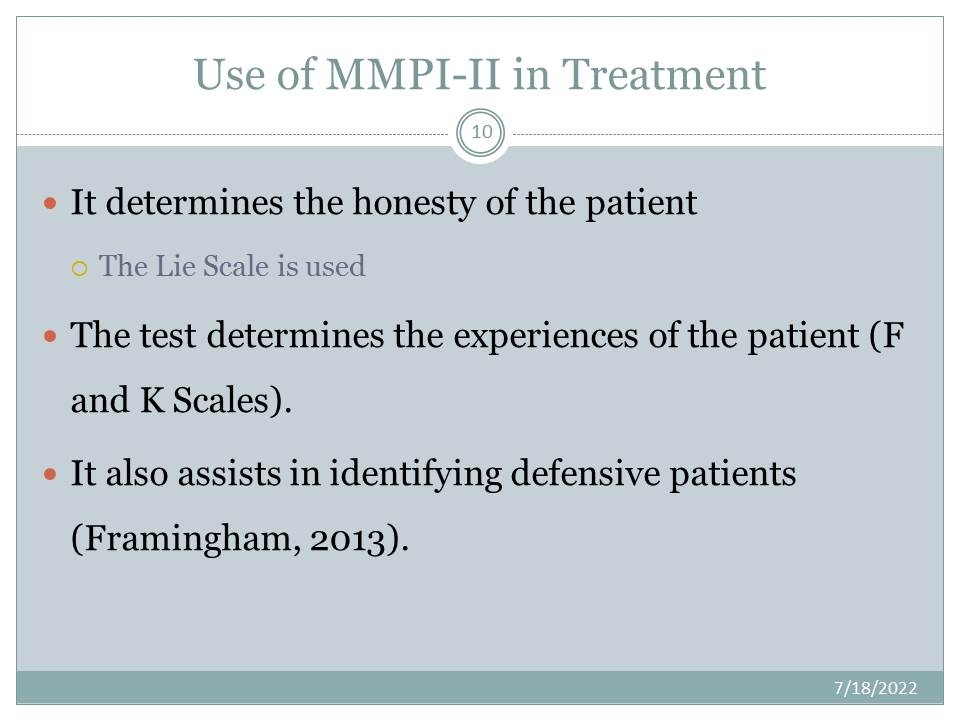
Potential Treatment Strategies
- Show results to the patient: It increases self-esteem and restores hope.
- Offer recovery follow up.
- Give a biofeedback report- It improves recovery.
- Patients who score high marks should be shown their results, as this can increase their self-esteem and give them more hope.
- Information on MMPI-II determines the level of follow-up required.
- Giving feedback on how the patient is progressing with the treatment improves on their recovery.
- Change the thinking habit of the patient.
- Use psychotherapy in treatment: In marriage counseling.
- Apply regular counseling- for instance, patients suffering from depression.
- Some patients will show the need to change their thinking habit through the MMPI-II.
- Use psychotherapy if there is a proof of a failing marriage, as this method is proven to rescue failing marriages.
- MMPI-II will identify patients who require constant counseling, like those with depression.
- Identify proper drug withdrawal procedure.
- Identify whether the treatment is short-term or long-term.
- Encourage socialization.
- Encourage regular and healthy exercises (Drayton, 2009).
- Patients who show the need to withdraw from a drug should be subjected to a suitable test.
- The level and type of the problem in a patient should determine the duration of the treatment.
- MMPI-II will show the kind of patients that require increased socialization or regular exercises.
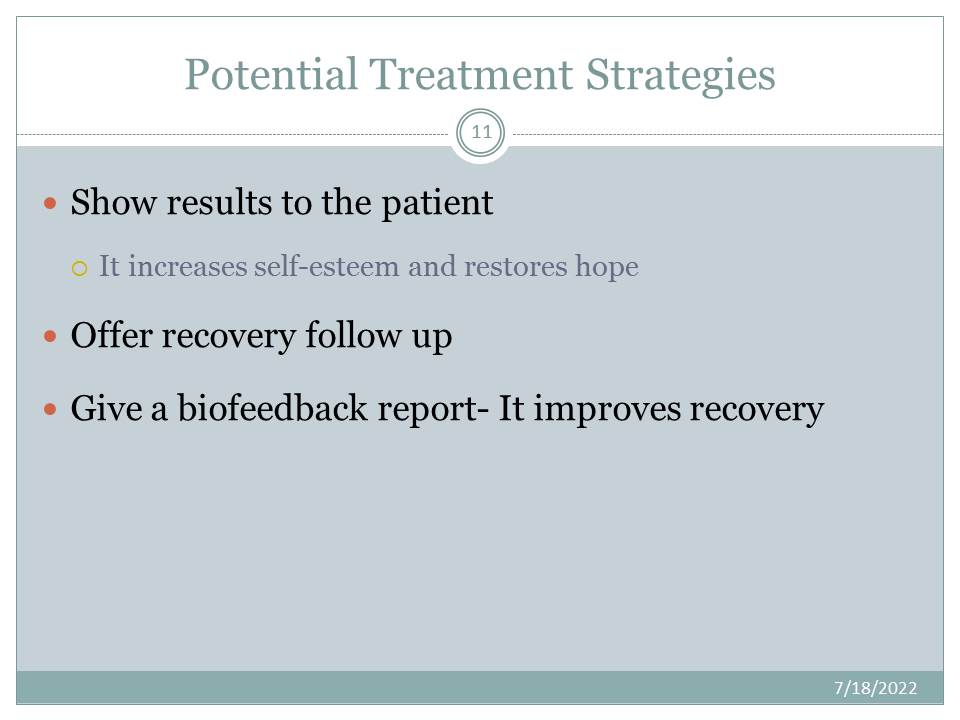
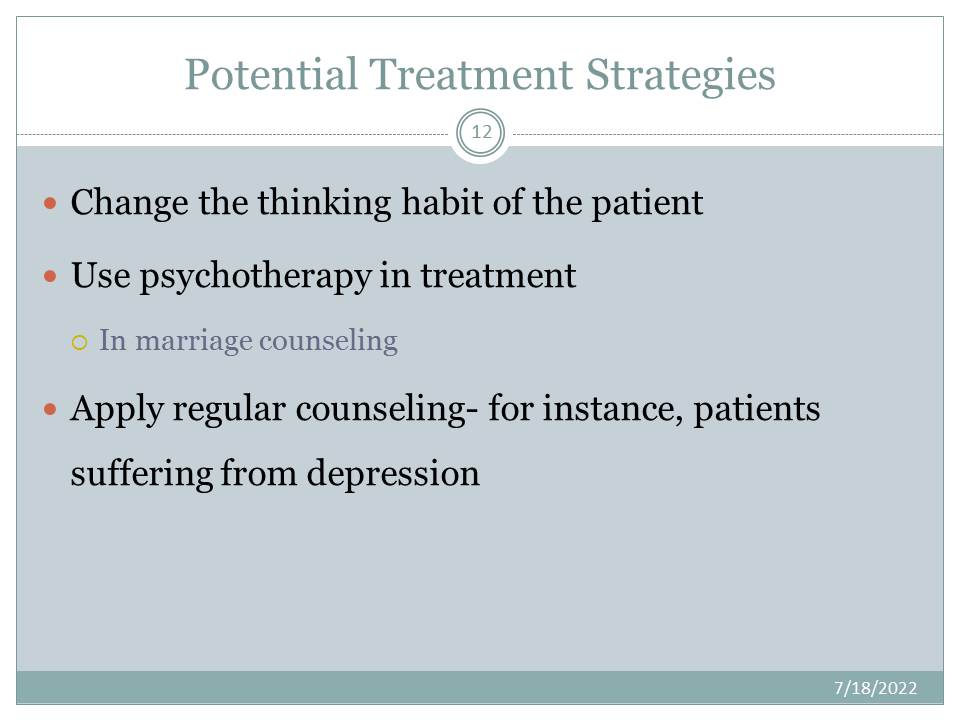
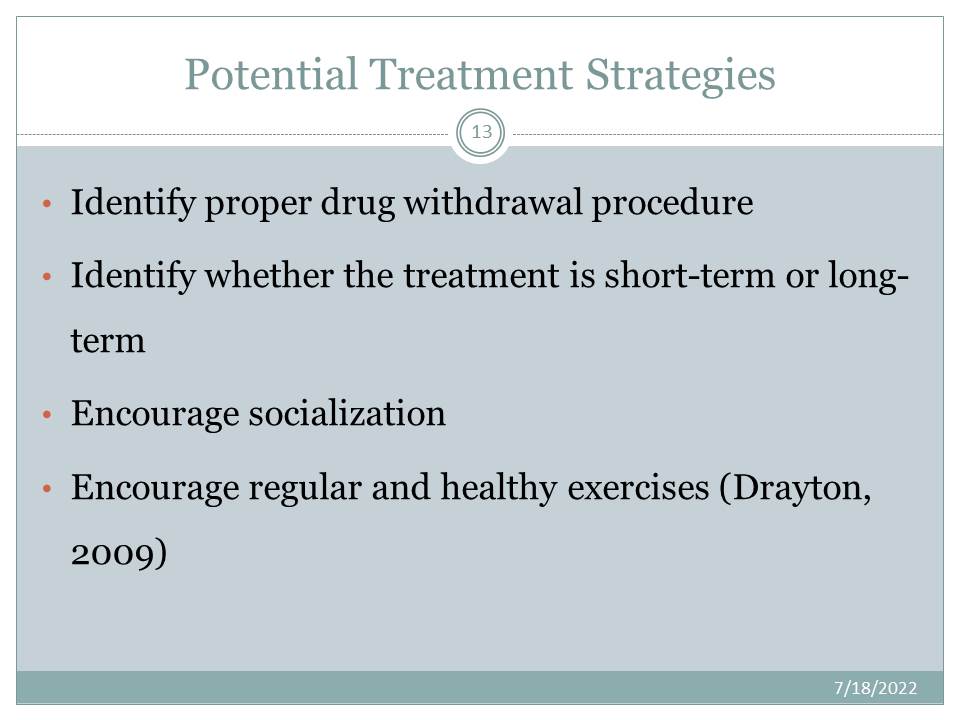
Conclusion
- MMPI-II is an upgrade of the MMPI-I.
- It is used on persons above 18 years.
- It is mostly used as a clinical test.
- It is helpful in determining the type of treatment strategies for specific patients.
The MMPI-II was developed to help diagnose adult psychopathy. It requires highly trained professionals, such as psychologist and psychiatrists to administer the test. The test should not be administered to patients who are below 18 years to avoid adverse ethical consequences. The scores obtained are helpful in determining the type of treatment strategies for various patients.

References
Bow, J. N., Flens, J. R., Gould, J. W., & Greenhut, D. (2005). An analysis of administration, scoring and interpretation of the MMPI-2 and MCMI-11/111 in child custody evaluations. Journal of Child Custody 2(4) 1-23.
Drayton, M. (2009). The Minnesota Multiphasic Personality Inventory-2 (MMP1-2). Occupational Medicine. 59(2) 135-136.
Framingham, J. (2013). Minnesota Multiphasic Personality Inventory (MMPI). Psych Central. Web.
Kaplan, R. M. & Saccuzzo, D. P. (2013). Psychological testing: Principles, applications, and issues (8th ed.). Belmont, CA: Cengage Learning.
The University of Minnesota. (2011). MMPI-2 overview. Web.